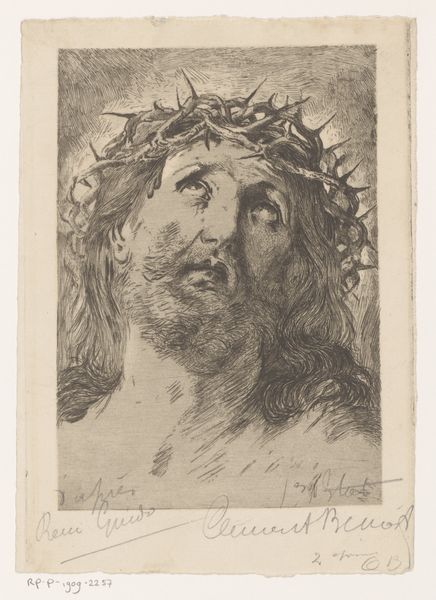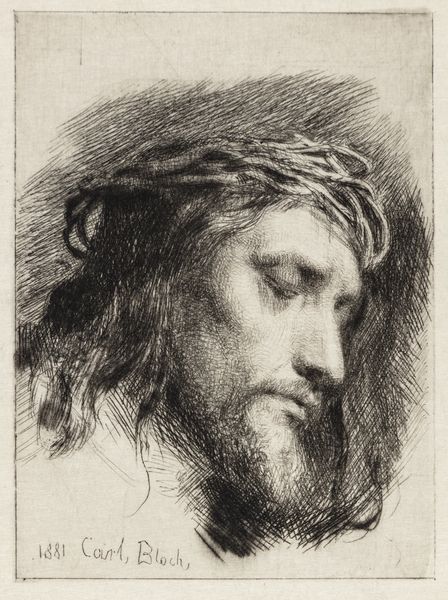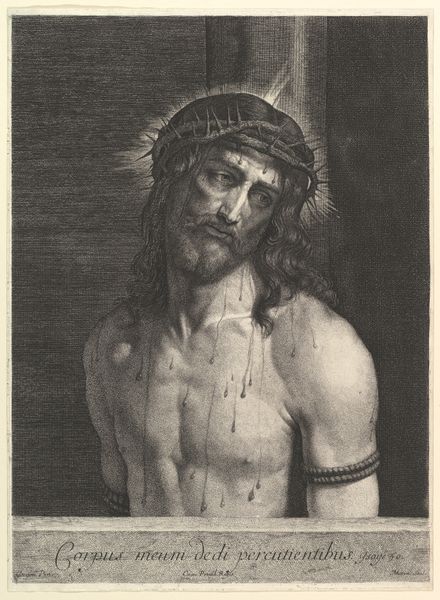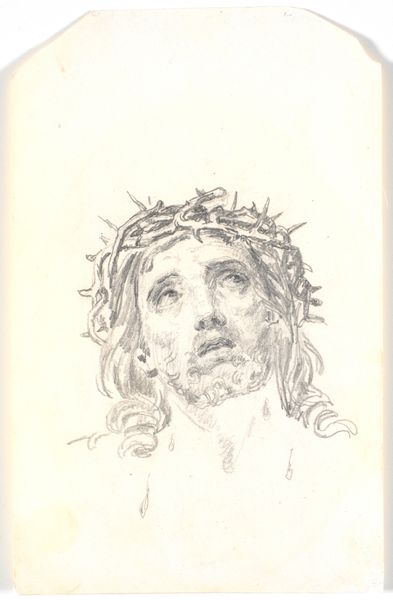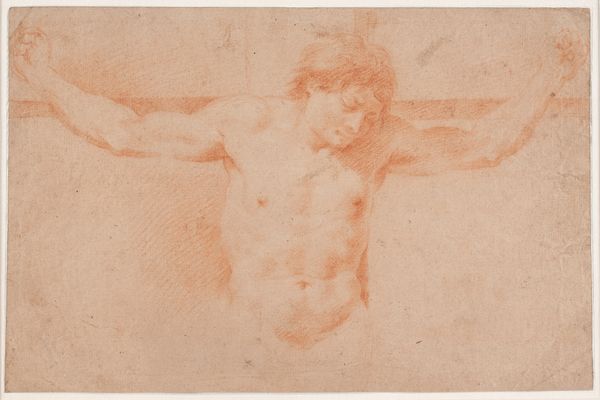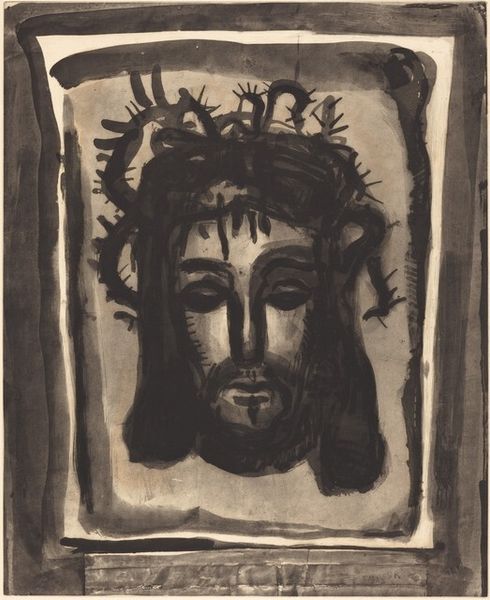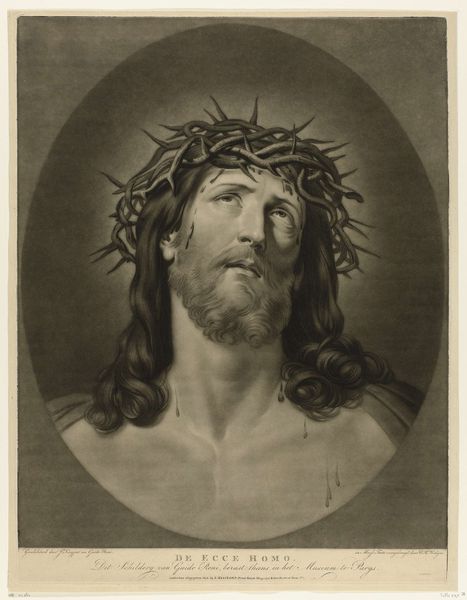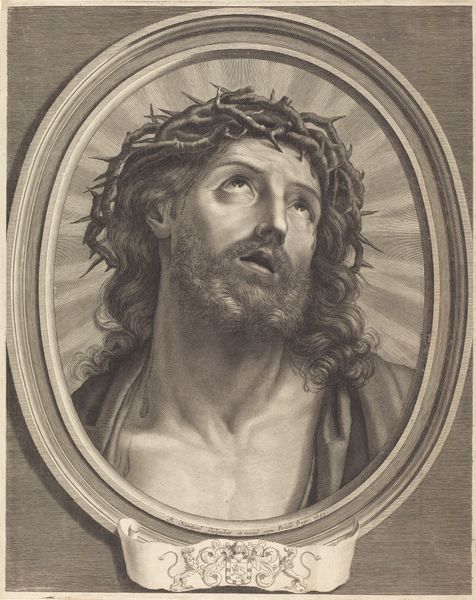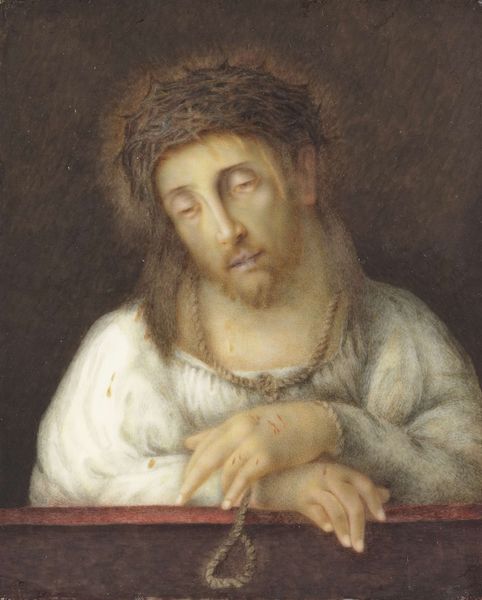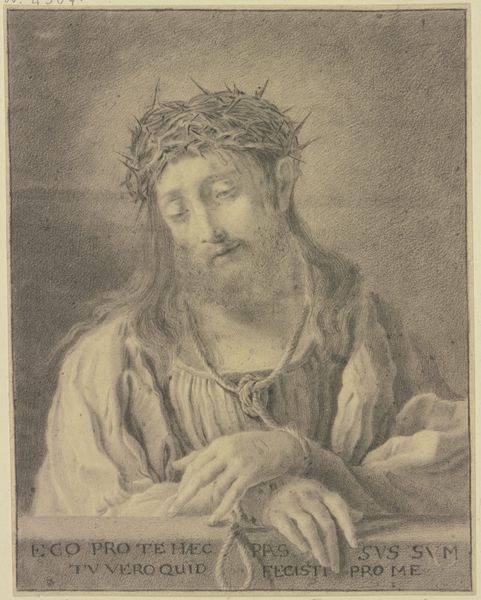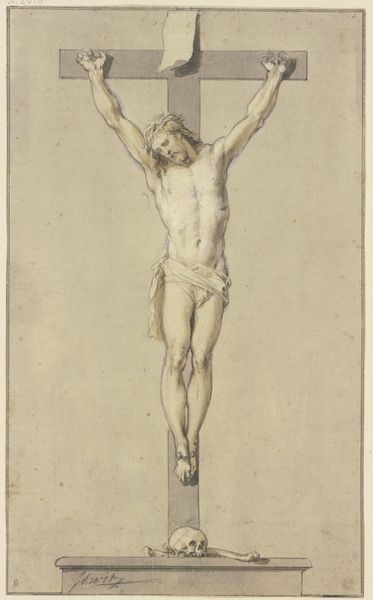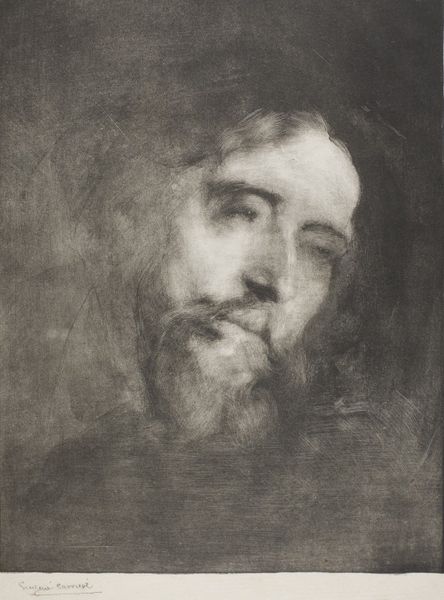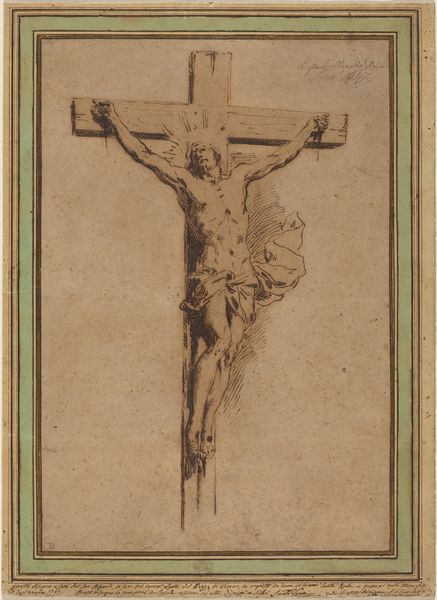
drawing, charcoal
#
portrait
#
drawing
#
self-portrait
#
baroque
#
charcoal drawing
#
figuration
#
portrait drawing
#
charcoal
#
history-painting
Dimensions: overall: 23.3 x 17 cm (9 3/16 x 6 11/16 in.)
Copyright: National Gallery of Art: CC0 1.0
Editor: Here we have Johann Ulrich Mayr's "Head of Christ" from around 1670, a charcoal drawing. It’s incredibly moving, isn't it? The crown of thorns and his downward gaze create such a powerful sense of suffering. How do you interpret the symbolism in this piece? Curator: This image speaks to the long tradition of depicting the Passion. Consider the iconography: the crown, not just an instrument of pain, but a symbolic inversion of kingship. Think about the historical context, too – how these images reinforced specific theologies, invited empathy, and served as a focal point for contemplation and memory. Editor: So, it's not just a literal representation, but also a carefully constructed symbol? Curator: Precisely. Charcoal itself lends a particular weight. The medium hints at ash and mortality, echoing the somber tone. Notice the angle of the head, too. Downcast, yes, but also a position of vulnerability and perhaps, a silent question directed at the viewer. Editor: That's interesting, the angle hadn’t struck me that way before. Do you think the artist wanted to evoke guilt? Curator: Not necessarily guilt, but perhaps introspection. Images like this are never neutral; they carry a heavy cultural baggage, shaping how we remember and relate to these narratives over time. It allows a moment of connection with mortality, suffering and possibly redemption. Editor: This has completely changed how I see the piece! Thank you for shedding light on the symbolism embedded within it. Curator: My pleasure. Exploring these layers enhances our experience and connection to art.
Comments
No comments
Be the first to comment and join the conversation on the ultimate creative platform.
